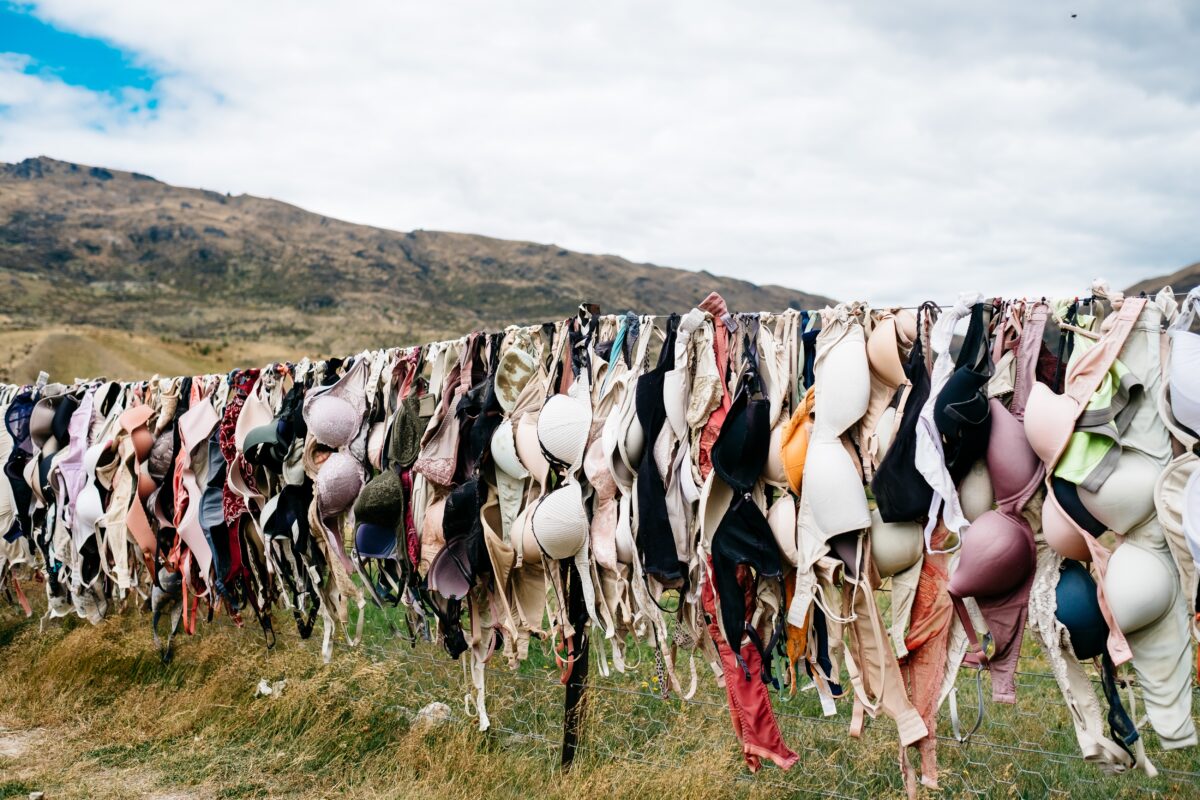This article originally appeared on pages 94-95 of the Spring 2023 of Coulture Magazine.
Boobs are back.
Nearly a decade after the whirlwind #FreeTheNipple movement began in 2013, breasts have once again become a major feature of mainstream fashion. Golden nipple motifs, exaggerated cone shapes, sculpted breastplates, and “naked dresses” have all been on display in major shows. And the looks have walked off the runway and into the streets.— n sheer tops, baby tees, corsets or in no bra at all: breasts are having a fashionable moment.
As a woman with a pair of my own, this movement is exciting. But as a woman with a considerably bigger cup size than the average runway model, I can’t help but notice where the trend falls flat: there appears to be an unspoken limit on exactly the type of nipple that can be freed. Of the famous faces at the movement’s forefront — like Kendall Jenner, Bella Hadid, and Florence Pugh — all are young, thin women with small, perky breasts. Despite greater acceptance of bigger bodies in fashion, bigger breasts are scarcely seen in this wave of chest-baring looks.
While smaller breasts are branded as minimalist or chic, bigger busts are almost always viewed as hypersexual. Smaller chests offer a degree of neutrality, giving small-chested women greater freedom to explore the styles of this trend. On the opposite end of the spectrum, fashion tips for women with bigger breasts are still geared towards minimizing their appearance, or covering them altogether.
For women with big boobs, this double-standard makes getting dressed a constant state of interrogation. I consider my clothes and style a critical part of the person I am. With countless hours of thrifting under my belt, I’ve filled my closet with a variety of colors, textures and shapes that I adore. You’d expect getting dressed to be an equally joyful experience. Instead, when I get ready for the day, I spend more time in the mirror analyzing my body rather than my outfit. When you have big boobs, no matter how much you tug, smooth and adjust: most clothes simply aren’t meant for you. Clothes rarely seem to fit perfectly, and are typically either bulky and tent-like or far too tight.
My internalized belief that my own breasts are sexualized — and thus, inappropriate in the settings of my day-to day-life — is a daily burden. For people with small breasts, wearing a tank top to class on a hot day might be an obvious choice for comfort and style. But for women with bigger boobs, visible cleavage might be too “revealing” for an academic setting. In the workplace, bigger breasts might appear “unprofessional” and the work day starts with double-checking potential gaps in a button-up.
When clothes aren’t right for your body, you begin to think your body isn’t right. On bad days, an oversized sweatshirt is my go-to. On those days, no matter which expensive bras I’ve bought, or how many layers I’m wearing, I’m followed by the creeping feeling that the moment I step out of my house, all anyone can see are my breasts.
Unlike the runway models and celebrities baring their breasts, this current explosion of boob-positive fashion doesn’t feel attainable to me, or women with bodies like mine. In most media, it is clear that small breasts are an essential factor of sheer garments, micro-tops and the ever-cool little white tank. Sported by women with breasts much larger than a runway model, exposed nipples and emphasized busts, once considered chic, would almost certainly be deemed vulgar or obscene.
Since 2013, the fashion industry has undeniably progressed a great deal. More and more, plus-size women models walk runways, and big name brands are being held accountable for holding a full range of sizes. But it continuously falls short, too. The average runway model’s measurements still represent a minority of the wider population, and rumors that the Kardashians are reversing their curve-enhancing surgeries might be a signal of a return to a dangerous standard of thinness.
In many ways, this recent wave of boob positivity seems more promising than 2013’s original iteration— this attention to women’s breasts appears to be much more nuanced. On the runway, appearing in experimental motifs and symbols, women’s breasts are abstract and artful representations of femininity. In everyday wear, destigmatizing the natural appearance of breasts gives women the opportunity to view their bodies as sexy, empowering, or simply neutral.
Women with boobs of every shape and size deserve that opportunity to tell their own story about their body. As fashion signals its embrace of breasts and feminine figures, it must be held accountable for accepting all breasts. Boob-positive fashion cannot simply be positive about just one shape.
- The Evolution of Bralessness in Media - April 28, 2023

